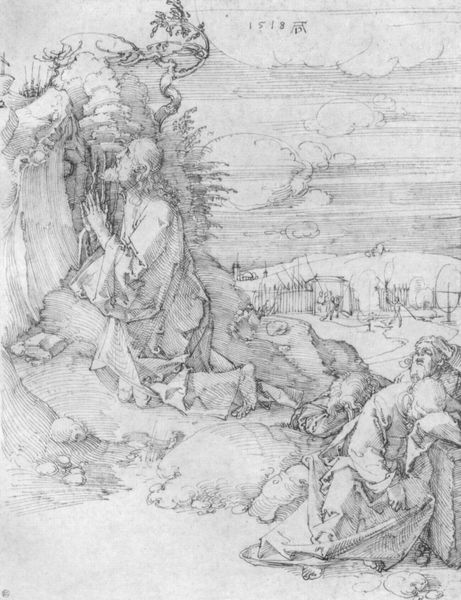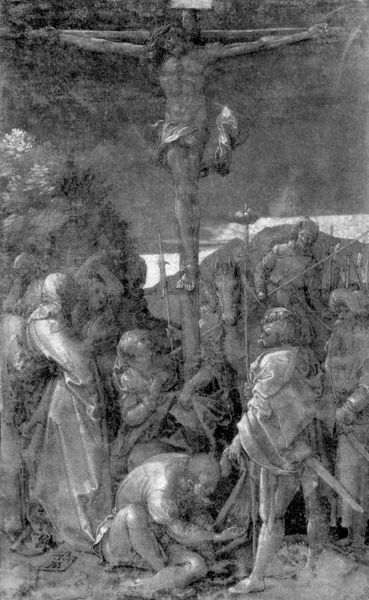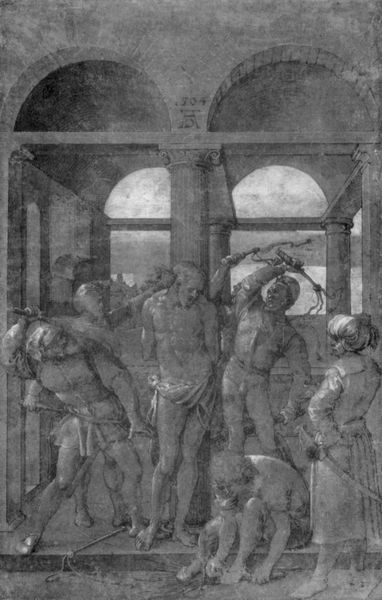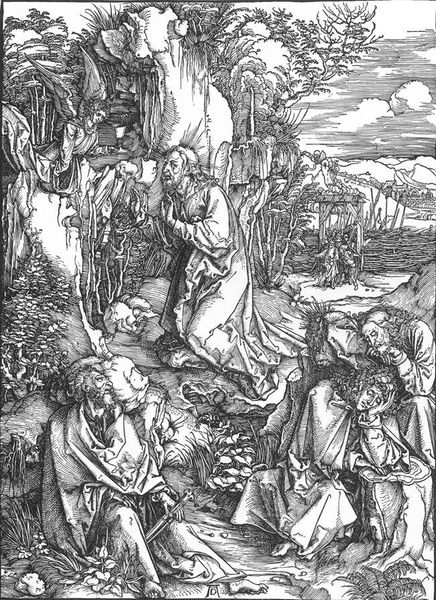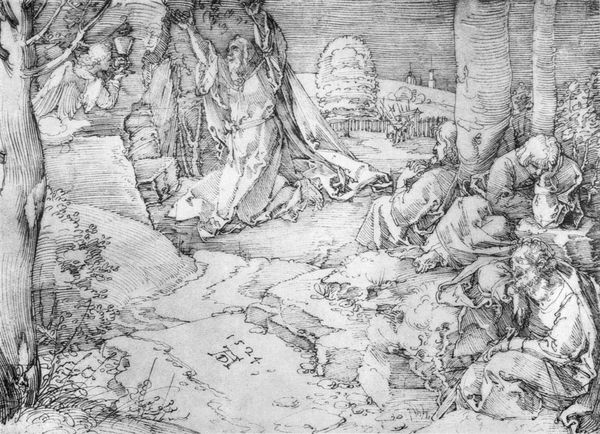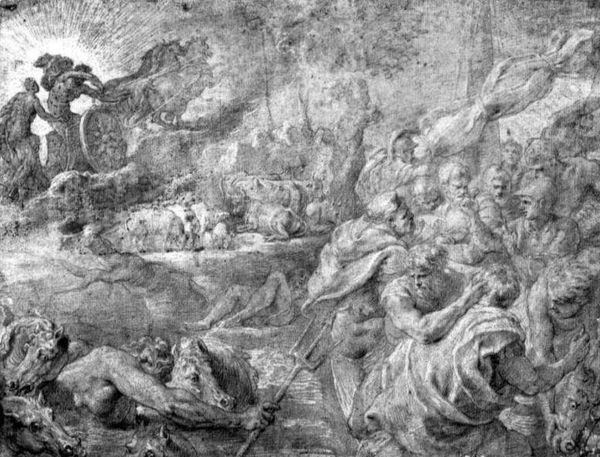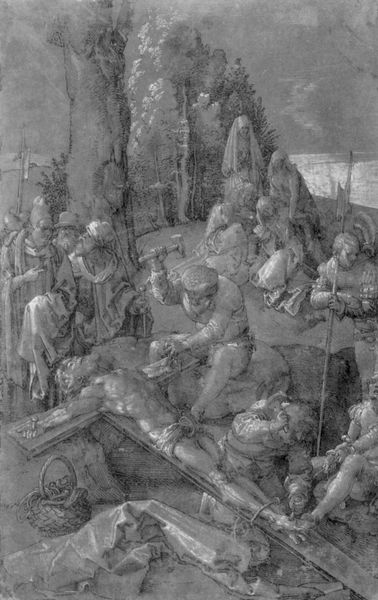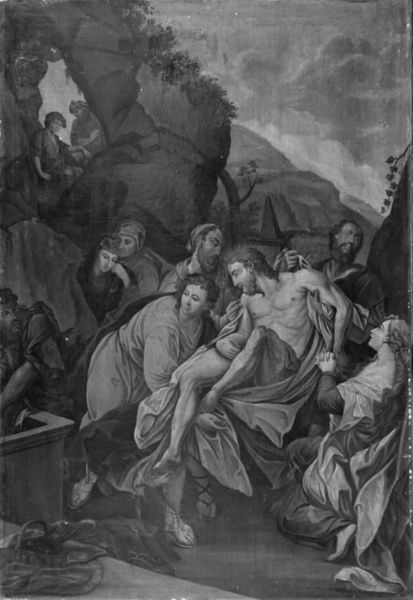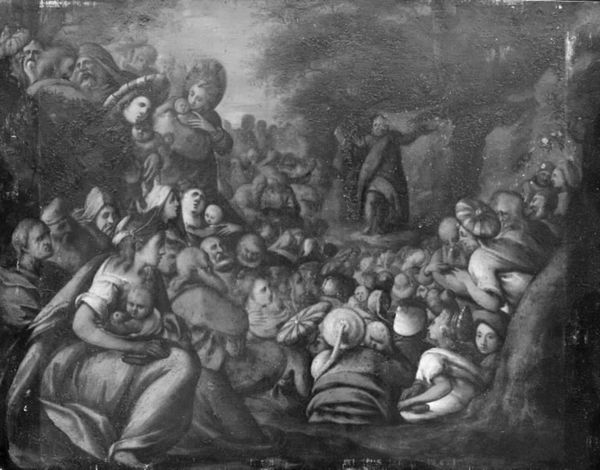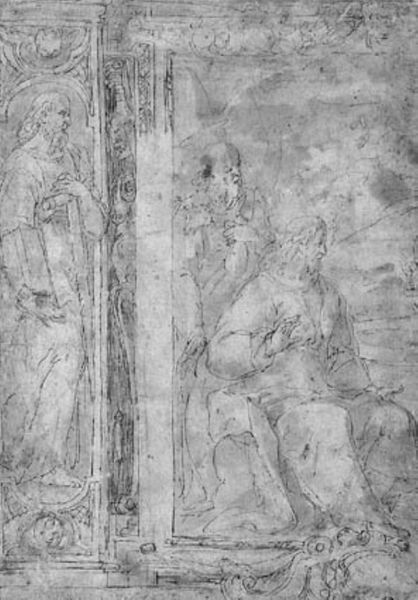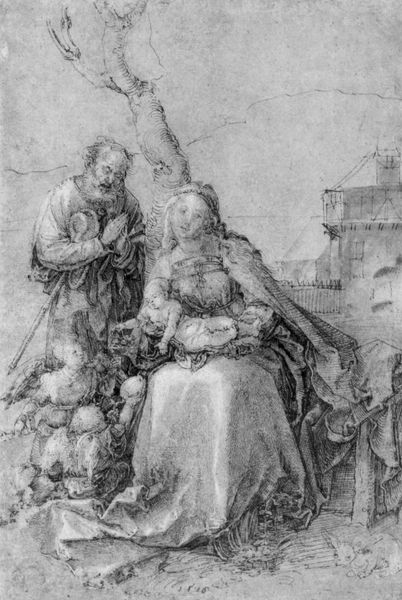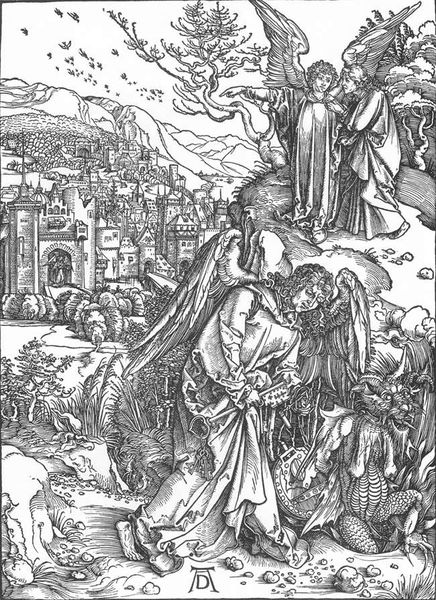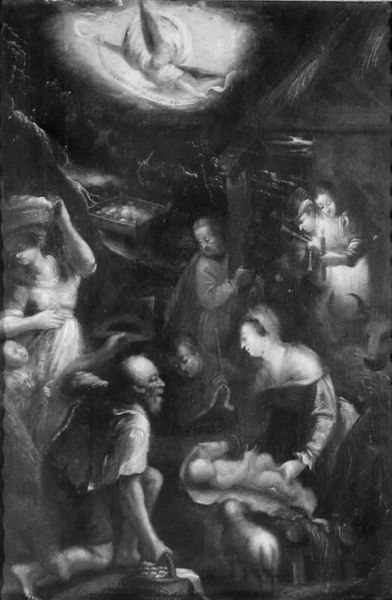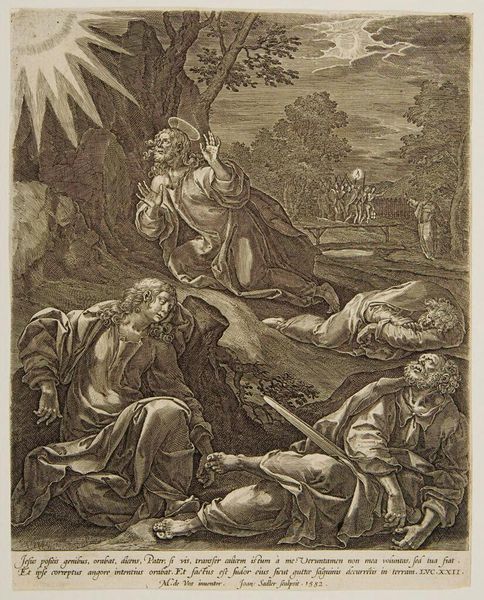
drawing, ink, pencil, graphite, charcoal
#
portrait
#
drawing
#
pencil sketch
#
landscape
#
charcoal drawing
#
figuration
#
charcoal art
#
ink
#
pencil drawing
#
pencil
#
christianity
#
graphite
#
charcoal
#
history-painting
#
northern-renaissance
#
charcoal
#
graphite
#
monochrome
Copyright: Public domain
Editor: So here we have Albrecht Durer's "Lamentation." It appears to be a charcoal and pencil drawing depicting the scene after the crucifixion. I find it profoundly sad and quite moving. What do you see in this piece that particularly resonates with you? Curator: The sorrow is palpable, isn’t it? I am drawn to the way Durer uses light and shadow to amplify the emotional weight of the scene. Notice how the figures are clustered around the tomb, each reacting in their unique way to the loss, shrouded in both literal and metaphorical darkness. It speaks of human grief so profoundly. And what do you make of the landscape looming behind them? It's not merely background noise. Editor: It seems… ominous? The crosses on the hill, and almost a darkening sky or is that simply the way he layered the charcoal? The stark contrast between the raw grief in the foreground and that somber scene behind really emphasizes the finality of death. Curator: Precisely! That somber atmosphere acts like a chorus, amplifying the tragedy playing out. It begs us to think beyond the immediate moment to the larger narrative, the echoes of sacrifice and redemption. Also, remember, prints at the time were intended for intimate and personal contemplation. Durer expertly translates those intimate feelings into the artistic expression through the medium of simple charcoal and graphite, don't you think? Editor: That’s fascinating. I hadn't considered the relationship between medium and intimacy. Looking at the subtle tonal shifts in the rendering of grief opens up new interpretive avenues. Curator: Exactly. Each visit, it presents new textures, both literally in charcoal and emotionally. Editor: Thanks for sharing that insightful context; it helps deepen my appreciation for Durer's intention, especially seeing how a piece like this meant so much to the artistic landscape and development of religious interpretation.
Comments
No comments
Be the first to comment and join the conversation on the ultimate creative platform.
